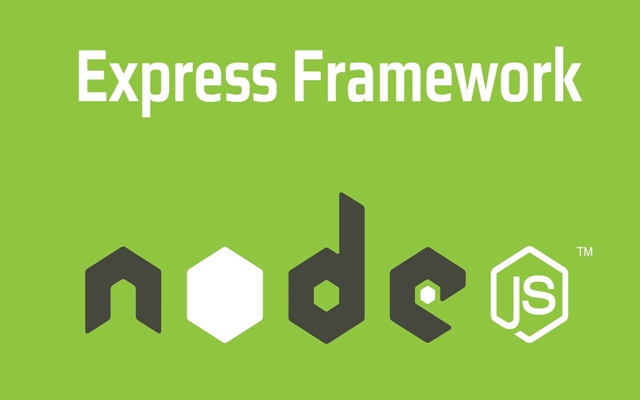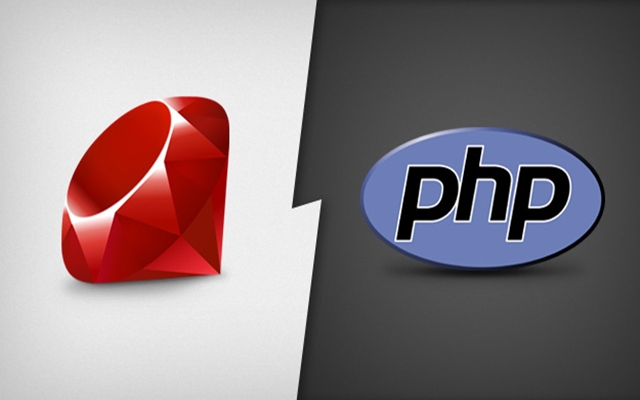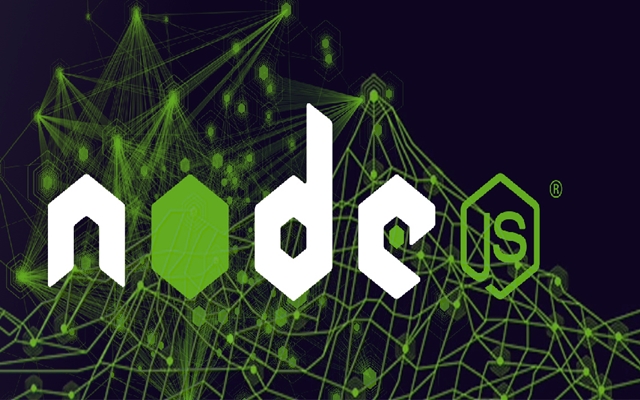TotalJS is an amazing web application framework for NodeJS that enables web developers to efficiently build awesome applications. It embeds various useful functions, and helps users enhance the performance standards for their web and mobile applications. Though we are aware of its several amazing benefits, the module NodeJS framework that lends support to MVC software architecture has got some of the most striking features to have a glance at. Listed below are the top features of TotalJS that look forward to transforming the state of web app development technology in near future.
 Integrated web server: This is the most amazing and unique feature of TotalJS. It helps in building rich, smooth web applications, and serves static and dynamic content using its integrated web server. It is a modern framework (all-in framework) that is fast, scalable and hassle-free. However, it is the “embedded functionality of allowing users” to choose their favourite database that sets it apart.
Integrated web server: This is the most amazing and unique feature of TotalJS. It helps in building rich, smooth web applications, and serves static and dynamic content using its integrated web server. It is a modern framework (all-in framework) that is fast, scalable and hassle-free. However, it is the “embedded functionality of allowing users” to choose their favourite database that sets it apart.
Extensibility: Extensibility is the capability of TotalJS in enabling NodeJS developers extending the in-built features and modules for the application. The web developer can take the help of external resources to perform this task or simply they can modify the source code of the framework. The Extensibility feature provided by TotalJS is simply incredible. The framework enables web developers to seamlessly build their own framework modules or packages. As per their specific needs, developers can easily extend or rewrite existing functionality.
Ability to get integrated with other JS frameworks: TotalJS is designed specifically to help businesses build a stable, feature-rich applications; TotalJS is completely compatible with a horde of client-side frameworks - including Bootstrap, AngularJS, BackboneJS, Polymer, and others. The web app tool also lends support to web sockets, RESTful routing mechanism, and for media streaming (providing an enriched user experience) can change the entire look of your application. With support from other JS frameworks like Bootstrap, Angular or Backbone etc, web developers can take the advantage of industry standard features of these platforms and they can easily build highly scalable and interactive web solutions. With Bootstrap, the web developer or javascript developer can create stunning and highly user friendly cross platform responsive web apps.
It comes integrated with ‘modificators’ which can basically alter or modify the content embedded in JavaScript, CSS or view before minification and compilation. As a result, users can seamlessly tweak some content (should they want) just-in-time prior to compilation process making the process faster. Web developers would know that a modificator plays a vital role or is extremely helpful for third modules.
The modern framework incorporates a unique ‘isomorphic’ code - which basically implies that any given line of code can perform on the client as well as on the server. This an awesome feature of TotalJS that enables reusability of code irrespective of their category i.e. a single piece of code can contribute both client side execution and server side. This is possible because TotalJS is a JavaScript framework and enables developers taking the benefit of JavaScript code that runs on either side. In short, both the front-end and the back-end share the similar code.
TotalJS for NodeJS also lends support to JSONP functionality, and provides enhanced importing dependencies into the view engine. This all simplifies the process of web app development (without an error) for NodeJS users. With JSONP/JSON, many interactive events can be handled in a smooth manner like event driven data transfer to or from view state or making the page asynchronous to achieve better performance. JSONP is extremely popular in the industry for its unmatched quality of data transfer between server and view. Gone are the days, when XML was used for such operation; now with JSON(P) more amount of data can be transferred securely over the internet.
Web developers can largely take advantage of the framework’s fully asynchronous, clean directory structure. It supports cache mechanism, assertion testing, custom mapping files, IP restrictions, NoSQL embedded database, generators, and additional utilities (letting users create an URL request) etc. With all these features a web developer can create an enterprise standard high performance web solution on the fly. In fact, top issues like sensitive data transfer, security loopholes and SQLInjection etc are well cared in TotalJS. So, technically, everything that is required to create stable, secure web applications for businesses is there inside TotalJS.
Another remarkable function of TotalJS comes in the form of its versioning of static files. With versioning, web developers can track each and every modification in codebase even after a long day. This enables JavaScript developer in controlling their codes efficiently and effectively without any glitch. Moreover, this also enables web developers in rolling back their code to a previous version making the whole process more effective. Since web developers often find it hard to reload JavaScript or CSS files due to HTTP cache, this NodeJS framework helps eliminate that problem. It goes a long way in thwarting the issues with HTTP cache. With this feature, the performance of TotalJS increases significantly and tremendously with efficient implementation of cache memory that really makes sense while building large scale enterprise standard web apps.
Its support for simple plain text mail is highly useful too. The web application software now comes integrated with a new method ‘F.logmail ()’ which helps sum up the content with <pre> tag. Using this, one can easily send a simple plain text mail. This is helpful in creating simple text emails that takes very less bandwidth and hence extremely helpful especially in mobile devices.
The optimized TotalJS further allows developers to localize static files for SPA. And important enough, it also lets users create a snapshot of JavaScript or CSS (following once the web framework has been commenced), and store that snapshot into NGINX public directory. With this, the developer gets adequate room in building highly optimized and efficient web apps for different purpose specially building mobile apps that runs under memory constraints.
Now, from above features we can conclude that, TotalJS is simply outstanding in terms of performance and quality of support that it provides to its developers. So, it is really a worthy successor of NodeJS in building highly stable web applications. Finally, we must like to add some added benefits of this framework, like improved importing dependencies, current instance snapshots, mobile device routing and loading framework without HTTP server etc. that makes the framework even more useful than before.
 Integrated web server: This is the most amazing and unique feature of TotalJS. It helps in building rich, smooth web applications, and serves static and dynamic content using its integrated web server. It is a modern framework (all-in framework) that is fast, scalable and hassle-free. However, it is the “embedded functionality of allowing users” to choose their favourite database that sets it apart.
Integrated web server: This is the most amazing and unique feature of TotalJS. It helps in building rich, smooth web applications, and serves static and dynamic content using its integrated web server. It is a modern framework (all-in framework) that is fast, scalable and hassle-free. However, it is the “embedded functionality of allowing users” to choose their favourite database that sets it apart.Extensibility: Extensibility is the capability of TotalJS in enabling NodeJS developers extending the in-built features and modules for the application. The web developer can take the help of external resources to perform this task or simply they can modify the source code of the framework. The Extensibility feature provided by TotalJS is simply incredible. The framework enables web developers to seamlessly build their own framework modules or packages. As per their specific needs, developers can easily extend or rewrite existing functionality.
Ability to get integrated with other JS frameworks: TotalJS is designed specifically to help businesses build a stable, feature-rich applications; TotalJS is completely compatible with a horde of client-side frameworks - including Bootstrap, AngularJS, BackboneJS, Polymer, and others. The web app tool also lends support to web sockets, RESTful routing mechanism, and for media streaming (providing an enriched user experience) can change the entire look of your application. With support from other JS frameworks like Bootstrap, Angular or Backbone etc, web developers can take the advantage of industry standard features of these platforms and they can easily build highly scalable and interactive web solutions. With Bootstrap, the web developer or javascript developer can create stunning and highly user friendly cross platform responsive web apps.
It comes integrated with ‘modificators’ which can basically alter or modify the content embedded in JavaScript, CSS or view before minification and compilation. As a result, users can seamlessly tweak some content (should they want) just-in-time prior to compilation process making the process faster. Web developers would know that a modificator plays a vital role or is extremely helpful for third modules.
The modern framework incorporates a unique ‘isomorphic’ code - which basically implies that any given line of code can perform on the client as well as on the server. This an awesome feature of TotalJS that enables reusability of code irrespective of their category i.e. a single piece of code can contribute both client side execution and server side. This is possible because TotalJS is a JavaScript framework and enables developers taking the benefit of JavaScript code that runs on either side. In short, both the front-end and the back-end share the similar code.
TotalJS for NodeJS also lends support to JSONP functionality, and provides enhanced importing dependencies into the view engine. This all simplifies the process of web app development (without an error) for NodeJS users. With JSONP/JSON, many interactive events can be handled in a smooth manner like event driven data transfer to or from view state or making the page asynchronous to achieve better performance. JSONP is extremely popular in the industry for its unmatched quality of data transfer between server and view. Gone are the days, when XML was used for such operation; now with JSON(P) more amount of data can be transferred securely over the internet.
Web developers can largely take advantage of the framework’s fully asynchronous, clean directory structure. It supports cache mechanism, assertion testing, custom mapping files, IP restrictions, NoSQL embedded database, generators, and additional utilities (letting users create an URL request) etc. With all these features a web developer can create an enterprise standard high performance web solution on the fly. In fact, top issues like sensitive data transfer, security loopholes and SQLInjection etc are well cared in TotalJS. So, technically, everything that is required to create stable, secure web applications for businesses is there inside TotalJS.
Another remarkable function of TotalJS comes in the form of its versioning of static files. With versioning, web developers can track each and every modification in codebase even after a long day. This enables JavaScript developer in controlling their codes efficiently and effectively without any glitch. Moreover, this also enables web developers in rolling back their code to a previous version making the whole process more effective. Since web developers often find it hard to reload JavaScript or CSS files due to HTTP cache, this NodeJS framework helps eliminate that problem. It goes a long way in thwarting the issues with HTTP cache. With this feature, the performance of TotalJS increases significantly and tremendously with efficient implementation of cache memory that really makes sense while building large scale enterprise standard web apps.
Its support for simple plain text mail is highly useful too. The web application software now comes integrated with a new method ‘F.logmail ()’ which helps sum up the content with <pre> tag. Using this, one can easily send a simple plain text mail. This is helpful in creating simple text emails that takes very less bandwidth and hence extremely helpful especially in mobile devices.
The optimized TotalJS further allows developers to localize static files for SPA. And important enough, it also lets users create a snapshot of JavaScript or CSS (following once the web framework has been commenced), and store that snapshot into NGINX public directory. With this, the developer gets adequate room in building highly optimized and efficient web apps for different purpose specially building mobile apps that runs under memory constraints.
Now, from above features we can conclude that, TotalJS is simply outstanding in terms of performance and quality of support that it provides to its developers. So, it is really a worthy successor of NodeJS in building highly stable web applications. Finally, we must like to add some added benefits of this framework, like improved importing dependencies, current instance snapshots, mobile device routing and loading framework without HTTP server etc. that makes the framework even more useful than before.

